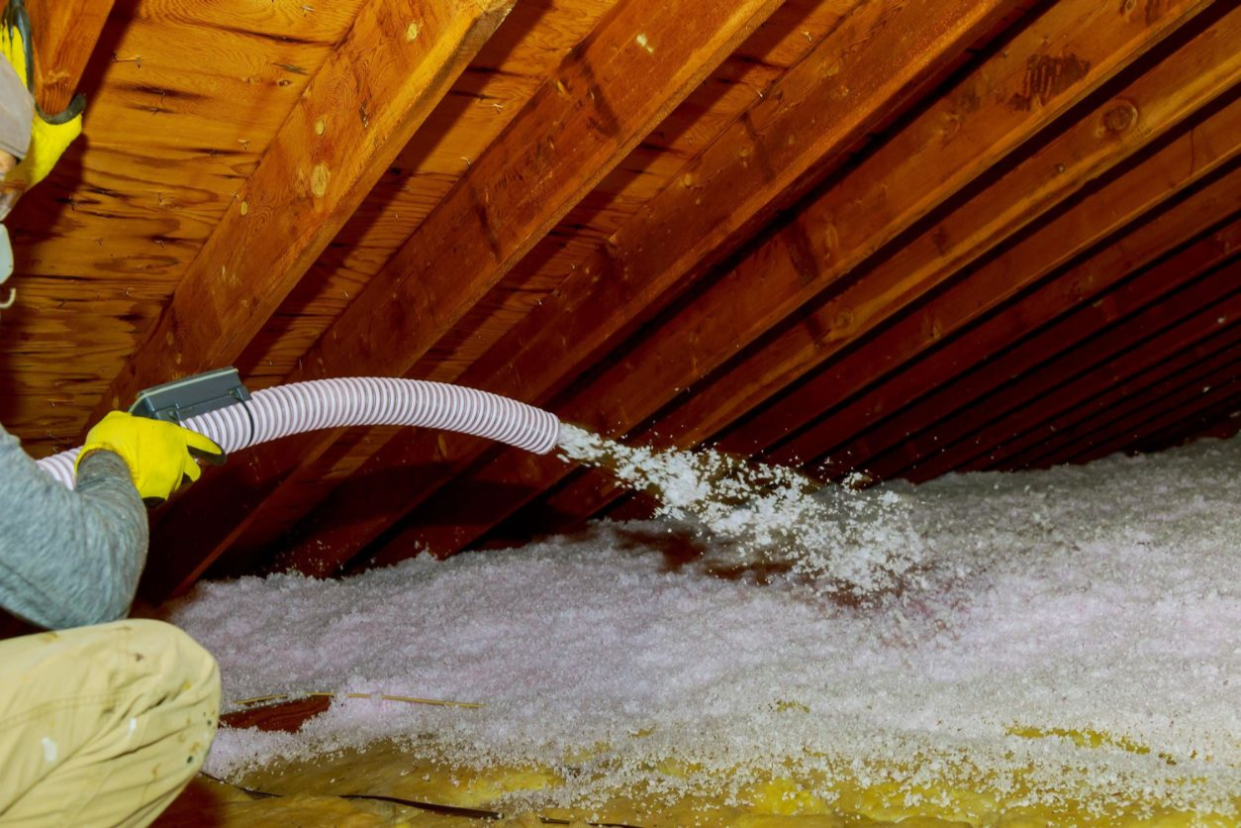Introduction
Indoor air quality plays a significant role in overall health and comfort. Poor air circulation, dust accumulation, and excessive moisture can lead to respiratory issues, allergies, and discomfort. One effective way to address these concerns is through blown-in insulation services. This method not only enhances energy efficiency but also contributes to cleaner, healthier air inside homes and buildings.
Understanding Blown-In Insulation and Its Impact on Air Quality
Blown-in insulation consists of loose-fill materials such as fiberglass or cellulose, which are evenly distributed into wall cavities, attics, and other spaces. This approach ensures comprehensive coverage, minimizing gaps and leaks that could let in contaminants like dust, pollen, and outdoor pollutants.
When insulation is inadequate or deteriorating, air leaks become more prevalent. These leaks introduce allergens and moisture, creating an environment where mold and bacteria can thrive. Upgrading to blown-in insulation reduces these risks by sealing gaps and maintaining stable indoor temperatures.
The Connection Between Insulation and Air Pollutants
Several indoor air pollutants originate from structural inefficiencies:
- Dust and Pollen: Poor insulation allows external pollutants to infiltrate, worsening allergy symptoms.
- Mold and Mildew: Inconsistent insulation contributes to moisture buildup, encouraging fungal growth.
- Volatile Organic Compounds (VOCs): Drafty areas may let in pollutants from outside sources, lowering air quality.
- Radon Gas: Some regions have higher radon levels, which can seep into homes through unsealed spaces.
Blown-in insulation acts as a barrier, reducing exposure to these contaminants and improving overall indoor air quality.
How Blown-In Insulation Helps Reduce Contaminants
1. Sealing Air Leaks to Prevent Pollutant Infiltration
Blown-in insulation forms a tight seal within walls, ceilings, and attics, preventing the entry of airborne contaminants. By limiting airflow through cracks and crevices, it reduces the presence of dust, pollen, and external pollutants.
2. Controlling Moisture and Preventing Mold Growth
Moisture accumulation inside walls or attics creates an ideal environment for mold. Blown-in insulation helps regulate humidity levels by preventing condensation buildup. This lowers the risk of mold spores circulating through ventilation systems.
3. Improving Ventilation Efficiency
Proper insulation works in tandem with HVAC systems, ensuring consistent air circulation. This reduces the strain on heating and cooling units while maintaining a balanced indoor climate. As a result, air quality remains stable with fewer pollutants.
4. Reducing VOC Exposure
Certain insulation materials, such as cellulose, are treated to minimize the release of volatile organic compounds (VOCs). This helps maintain a healthier breathing environment, especially in older homes where VOC levels may be higher.
Choosing the Right Blown-In Insulation Material
When selecting blown-in insulation, consider the material’s effectiveness in enhancing air quality:
| Material | Benefits for Air Quality |
|---|---|
| Cellulose | Made from recycled paper, treated to resist mold and pests. Helps regulate moisture and reduce VOCs. |
| Fiberglass | Non-combustible and resistant to mold growth. Provides effective air sealing when installed correctly. |
| Mineral Wool | Offers soundproofing benefits along with moisture resistance. Contains fewer allergens. |
Selecting the right material based on your home’s structure and environmental conditions ensures optimal performance.
Professional Installation vs. DIY Approaches
While DIY insulation projects may seem cost-effective, professional installation ensures precision and effectiveness. Experts use specialized equipment to distribute insulation evenly, eliminating gaps that could compromise air quality.
A professional installation also includes:
- Thorough assessment of existing insulation.
- Identification of air leaks and moisture-prone areas.
- Proper application techniques to maximize coverage.
Enhancing Air Filtration Alongside Insulation
Blown-in insulation works best when combined with proper air filtration strategies. Consider these steps for maintaining high indoor air quality:
- Upgrading Air Filters: Use high-efficiency filters in HVAC systems to trap fine particles.
- Sealing Ducts: Prevent contaminants from circulating by sealing leaks in air ducts.
- Regular Ventilation Maintenance: Clean air vents and ducts to remove accumulated dust and debris.
- Using Air Purifiers: Additional air purification systems can further reduce airborne contaminants.
Improve Indoor Air Quality with Prestige Insulation Solutions
Upgrading to blown-in insulation is a step toward cleaner, healthier indoor air. At Prestige Insulation Solutions, we specialize in professional insulation services that enhance both energy efficiency and air quality.
Conclusion
Blown-in insulation enhances indoor air quality by sealing gaps, reducing pollutants, and controlling moisture. Investing in professional installation ensures optimal results, contributing to a cleaner, healthier living environment.
For more information, contact Prestige Insulation Solutions at (850) 429-4969 or email [email protected] to schedule a consultation.
Frequently Asked Questions (FAQs)
1. How does blown-in insulation improve air quality?
Blown-in insulation seals gaps that allow pollutants, allergens, and moisture to enter indoor spaces. This reduces dust accumulation, mold growth, and exposure to outdoor contaminants.
2. What is the best type of blown-in insulation for improving air quality?
Cellulose and fiberglass are commonly used due to their mold resistance and ability to regulate moisture. The choice depends on specific indoor conditions and insulation goals.
3. Can blown-in insulation help with allergies?
Yes. By reducing airborne dust, pollen, and mold spores, blown-in insulation minimizes allergy triggers inside homes and buildings.
4. Will blown-in insulation make my home too airtight?
Properly installed insulation improves indoor air quality while allowing necessary ventilation. It should be paired with an efficient HVAC system for balanced airflow.
5. How long does blown-in insulation last?
Depending on the material, blown-in insulation can last 20-30 years or more with proper maintenance. Regular inspections help ensure effectiveness over time.
6. Is blown-in insulation environmentally friendly?
Cellulose insulation is made from recycled materials and treated with eco-friendly fire retardants. Fiberglass is also a sustainable choice due to its durability and non-toxic composition.
7. Can blown-in insulation reduce indoor odors?
By sealing gaps and preventing moisture buildup, insulation helps minimize odors caused by mold, mildew, and external pollutants.
8. How much does professional blown-in insulation cost?
Costs vary depending on home size, material choice, and installation requirements. Contact Prestige Insulation Solutions for a customized estimate.
9. How soon will I notice air quality improvements after installation?
Many homeowners experience noticeable improvements within a few days as dust infiltration decreases and humidity levels stabilize.
10. Do I need to replace existing insulation before adding blown-in insulation?
In some cases, old insulation may need removal if it’s damaged, moldy, or inefficient. A professional assessment determines the best approach.



